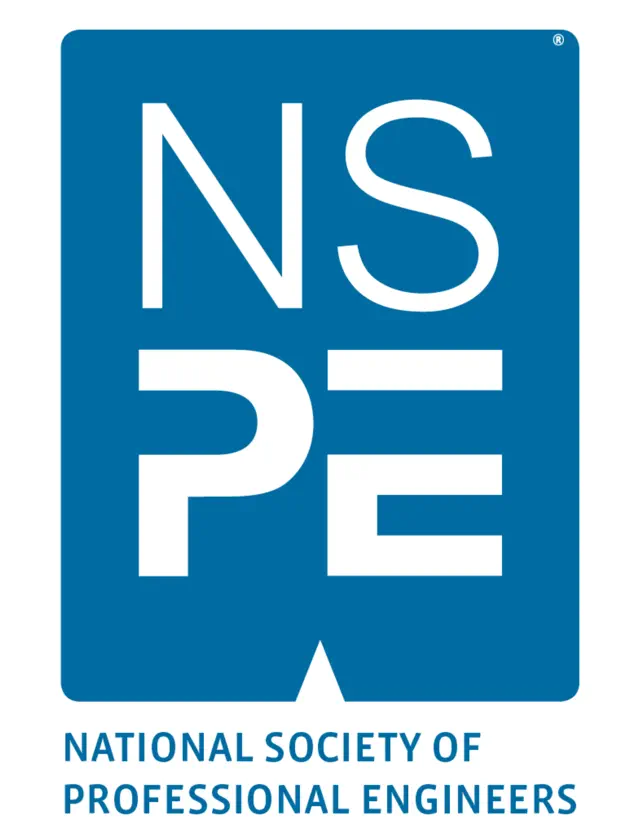Spring 2021
Does Licensing Need a Shake-Up?
BY DANIELLE BOYKIN
Artificial intelligence, autonomous vehicles, the internet of things, and robotics are just a few of the latest technological advancements that are transforming society as part of a fourth industrial revolution. Although there is much to gain from these developing technologies, there is also great risk with unfettered usage. That’s why a collaborative of forward-thinking engineers, known as the Engineering Change Lab-USA, spent a day last December assessing whether the current, slow-to-change system of licensing engineers is up to the task of protecting the public as these new technologies race ahead.
When engineering licensure was introduced in the US, the second industrial revolution of that period involved advancement in manufacturing, the introduction of telegraph and railroad networks, water sewage systems, and electrical power expansion. Now, cloud computing, drones, 3D printing technology, and the development of smart cities are on the scene.
During the ECL-USA Summit 10 on Licensure Models for the Fourth Industrial Revolution, licensing board executives Patty Mamola, P.E., and Lance Kinney, P.E., were key contributors to discussions about this rapid advancement. The summit was presented in partnership with NSPE and the National Council of Examiners for Engineering and Surveying.
“When you think about the fourth industrial revolution and how technology is proliferating in our lives, you realize that our current licensure models may not work for what’s happening with these emerging technologies,” says Mamola, executive director of the Nevada State Board of Professional Engineers and Land Surveyors.
The summit was guided, in part, by the writings of World Economic Forum founder and executive chairman Klaus Schwab on the significance of the fourth industrial revolution. Schwab, a German engineer and economist, understands that these technologies will present society with benefits and opportunities. Yet, he has warned that the world doesn’t have the luxury of time to respond to negative consequences that could arise with their use.
In an article published in January 2018, Schwab wrote: “The speed, scale and scope of change that is underway today, coupled with the fact that entrepreneurs, companies, and policymakers are already creating rules, norms, techniques and infrastructure around new technologies, means that in 10 years it will be too late. The structure of new technologies will be more or less set, and the perspectives and values of those who created them will be firmly embedded within the many technologies that surround us and which have become part of us.”
During the summit, discussions centered on the future of engineering and regulation, ethics, and the part engineering plays in these technology changes. Challenges are happening now:
- Education—Emerging new engineering disciplines and multidisciplinary degrees driven by industry and student demand;
- Legislation—Increasing focus by legislators on reducing barriers to entry and easing the portability of licenses across state lines;
- Public Perception and Expectations—Lack of understanding by the public of what engineers do, of the fact that not all engineers need to be licensed, and of the differences between software developers and licensed engineers;
- Technology—Increasing use in engineering solutions of artificial intelligence, machine learning, data analysis, the internet of things, and other technologies that are often developed by nonengineers; and
- Engineering Practice—Increasing complexity, interdisciplinary collaboration, sustainability and resiliency requirements, stakeholder and public involvement, and integration of emerging technologies.
The message is clear: The profession needs to address these challenges before it’s forced to do so. And the clock is ticking. “I don’t completely agree with the notion of having a free for all at a traffic intersection, waiting until people start to crash, and then putting in a traffic signal. There can be smart regulation to prevent disasters before they happen. I also realize it’s a fine line to walk because you can easily overregulate,” says Kinney, the executive director of the Texas Board of Professional Engineers and Land Surveyors.
A Disruption Model
During their presentation “New Licensure Models: Innovation Versus Disruption,” Mamola and Kinney examined how society is accepting new technologies without regard to regulation or ethical concerns. They emphasized that technologies such as autonomous vehicles and artificial intelligence may pose a risk to the current model of licensure and new regulatory approaches are needed.
Summit participants were reminded of licensure’s key expectations: 1) The public relies on the competence and ethics of professional engineers to keep them safe; 2) Professional engineers must regard their duty to public health, safety, and welfare as paramount; 3) Regulators protect the public by setting standards and holding practitioners accountable to those standards; and 4) Professionals are entitled to be governed by practices that are transparent, objective, impartial, fair, and timely.
These expectations are pivotal as new technological concepts come along and norms quickly shift. Ridesharing companies provide an example of this shift. “The taxi industry is one of the most highly regulated industries there is. And look at what Uber did,” says Mamola. “Uber just stepped outside of that and created a software platform that connects people with cars. Uber and Lyft have changed the taxi industry and they aren’t regulated.”
The Uber model, says Mamola, is a disruption model. What does Uber have to do with licensing engineers? “We are not looking at innovation and making little changes here and there to improve the current licensure model,” she says. “We are really looking at disruption.”
A New Kind of Engineer
During the summit, Tim Jacobs spoke about industry’s increasing demand for interdisciplinary engineering programs as well as increasing demand from students who want to enroll in programs that allow for unique approaches to engineering problem solving. Jacobs, the founding interim head of the Department of Multi-Disciplinary Engineering at Texas A&M University, shared how students can earn a bachelor’s degree with 58 of the required 128 hours coming from the coursework of multiple engineering disciplines. The department has grown from less than 30 students to more than 170 students in six interdisciplinary degree programs.
As universities launch more multidisciplinary engineering programs, the work of their graduates will affect public safety, just like graduates of the classic engineering disciplines, says Kinney. But when it comes to pursuing licensure, where will these engineers fit in? “What test does an AI engineer take? What test does an autonomous vehicle engineer take? Is it computing, is it electronics, is it mechanics?”
While engineering licensing will certainly maintain the legacy models for civil, electrical, and mechanical disciplines, there will be a need for an additional model for engineers with these multidisciplinary knowledge and skills.
One person who doesn’t fit neatly into the traditional licensing system is NSPE member Caitlin Kenney, P.E. Her work involves supporting software development projects for the US Navy. With more than 10 years of experience as an industrial and systems engineer, she has seen how rapidly technology has advanced in a short period of time. As the Navy and Congress push for modernization, working with cyber-physical systems and cloud computing are becoming a normal part of Kenney’s projects.
During her summit presentation on “Licensure and Industry 4.0,” Kenney emphasized that the influence of emerging technologies is affecting all engineering disciplines. The process to integrate these technologies offers her both professional challenges and excitement, but safety and security are the top priorities.
These complex systems mean that there are more humans in the loop than ever before—and there are infinite opportunities for things to go wrong, she says. “These systems have the potential to harm the end user or the public if they’re not designed properly. I don’t go a day without talking about quality and safety and ensuring that we have the built-in rigor to protect the user and the public.”
When Kenney graduated with a bachelor’s degree in industrial engineering, she had no idea that the PE license was an option for her. Her first job, working with the US Coast Guard, exposed her to this possibility. “As I was working on a ship-design project, I was surrounded by PEs. It became pretty clear to me that licensure was highly desired and would be critical to the success of my long-term career path.”
Speaking about licensure is Kenney’s “passion project,” and she volunteers with the National Council of Examiners for Engineering and Surveying on industrial and systems engineering test development. But Kenney recalls the skepticism she experienced when applying for her first PE license because some licensing board members didn’t understand her work as “engineering.” Despite the skepticism, the board granted her a license, and later she was granted a second license in another state.
The fourth industrial revolution, Kenney believes, is highlighting that licensure systems need to be adaptable, accommodating to interdisciplinary engineering, and focused on continuous learning. “From a licensure perspective, I think that education, experience, and exams are all important. But having a portfolio or a peer-review component can be important to showcase competency.”
Kenney also believes that self-investment through participation in a professional society and webinars is critical to staying agile and adopting new approaches to engineering.
Timing is Everything
Time is of the essence when developing a new licensing model. “Through the research, we’ve found that people want a regulatory scheme with the use of these new technologies. Companies do, governments are looking for it, but they don’t know how to do it,” says Lance Kinney. “And waiting to build a test over the course of 10 years or until there are 15 ABET-accredited programs is far too late.”
Kinney points to the development and rollout of the software engineering PE exam as a case study in the potential pitfalls of addressing technological advancement and professional practice. The traditional route of test development began in 2007 through the work of the Software Engineering Consortium, which included NSPE. The PE exam was launched in 2013 but discontinued in 2018 due to a low number of test takers: 81 candidates over five exam administrations. Although the exam no longer exists, the impact of software engineering on the profession and society at large remains.
Kinney believes it’s worth the effort to examine the licensing models of other nations with successful regulation programs. Some programs consist of phased or tiered licensure, where there are no tests, but portfolio reviews. Other options include regulation of project teams or specific projects and licensing based on ethical practice.
While ECL-USA has started a public conversation about PE licensing in the fourth industrial revolution, others are taking a closer look too. An NCEES task force, chaired by David Beasley, P.E., will be reevaluating the current engineering licensure model and will review other professions’ licensure models. As part of the evaluation, task force members will assess whether a tiered licensure model should include more engineering team members who have credentials other than a PE license. The medical profession, with medical doctors, physician assistants, and registered nurses, is one example of a tiered approach.
An ECL-USA working group will also conduct an experiment to develop a prototype for a new regulatory system, to benefit the public and the profession. As the process plays out, Mamola believes that the focus must remain on the essential reason for licensing engineers. “We license people because we regulate them,” she says. “And why do we regulate them? Because the public has an expectation that safety is improved when we do this.”


 Volunteering at NSPE is a great opportunity to grow your professional network and connect with other leaders in the field.
Volunteering at NSPE is a great opportunity to grow your professional network and connect with other leaders in the field. The National Society of Professional Engineers (NSPE) encourages you to explore the resources to cast your vote on election day:
The National Society of Professional Engineers (NSPE) encourages you to explore the resources to cast your vote on election day: